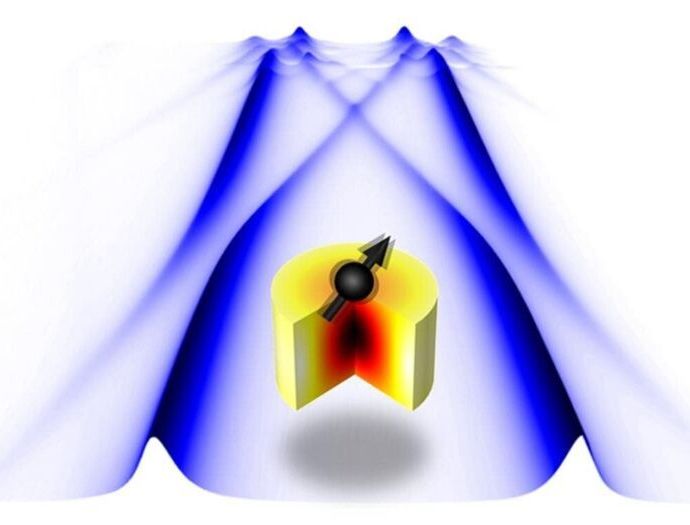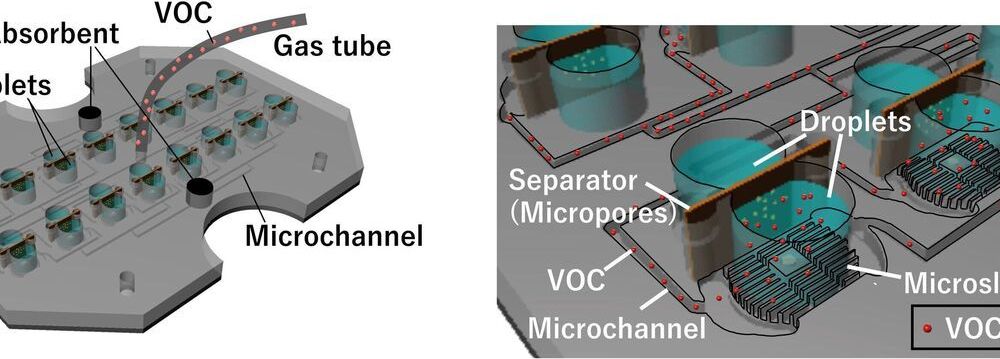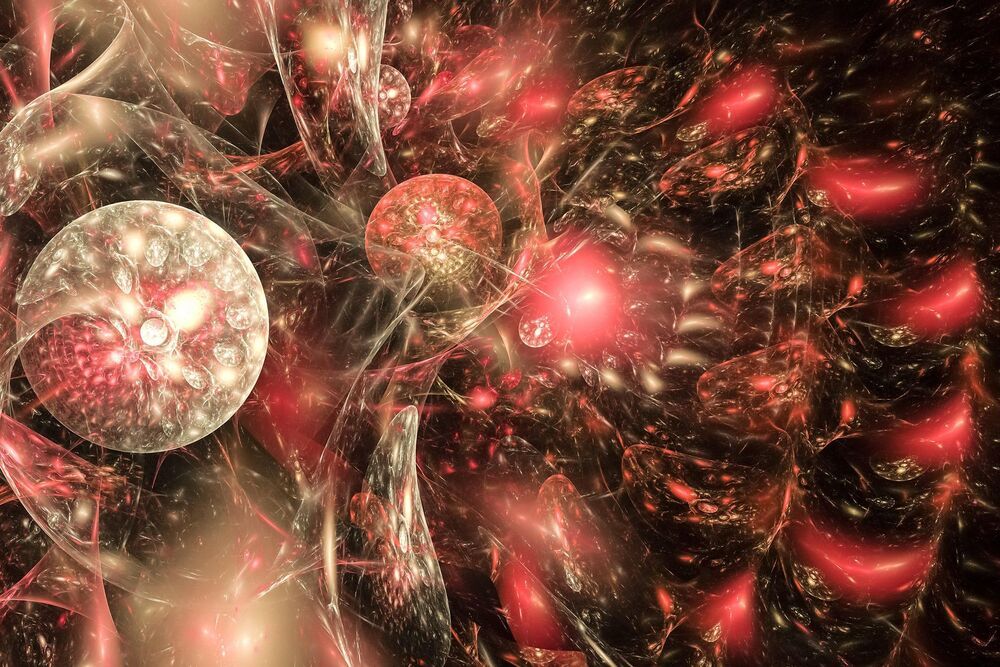😃
Military Multifunctional Folding Shovel 😍😱
Buy via Amazon : https://amzn.to/2JZl7n6


Working with theorists in the University of Chicago’s Pritzker School of Molecular Engineering, researchers in the U.S. Department of Energy’s (DOE) Argonne National Laboratory have achieved a scientific control that is a first of its kind. They demonstrated a novel approach that allows real-time control of the interactions between microwave photons and magnons, potentially leading to advances in electronic devices and quantum signal processing.
Microwave photons are elementary particles forming the electromagnetic waves that we use for wireless communications. On the other hand, magnons are the elementary particles forming what scientists call “spin waves”—wave-like disturbances in an ordered array of microscopic aligned spins that can occur in certain magnetic materials.
Microwave photon-magnon interaction has emerged in recent years as a promising platform for both classical and quantum information processing. Yet, this interaction had proved impossible to manipulate in real time, until now.

A keen sense of smell is a powerful ability shared by many organisms. However, it has proven difficult to replicate by artificial means. Researchers combined biological and engineered elements to create what is known as a biohybrid component. Their volatile organic compound sensor can effectively detect odors in gaseous form. They hope to refine the concept for use in medical diagnosis and the detection of hazardous materials.
Electronic devices such as cameras, microphones and pressure sensors enable machines to sense and quantify their environments optically, acoustically and physically. Our sense of smell however, despite being one of nature’s most primal senses, has proven very difficult to replicate artificially. Evolution has refined this sense over millions of years and researchers are working hard to catch up.
“Odors, airborne chemical signatures, can carry useful information about environments or samples under investigation. However, this information is not harnessed well due to a lack of sensors with sufficient sensitivity and selectivity,” said Professor Shoji Takeuchi from the Biohybrid Systems Laboratory at the University of Tokyo. “On the other hand, biological organisms use odor information extremely efficiently. So we decided to combine existing biological sensors directly with artificial systems to create highly sensitive volatile organic compound (VOC) sensors. We call these biohybrid sensors.”

Metals and insulators are the yin and yang of physics, their respective material properties strictly dictated by their electrons’ mobility — metals should conduct electrons freely, while insulators keep them in place.
So when physicists from Princeton University in the US found a quantum quirk of metals bouncing around inside an insulating compound, they were lost for an explanation.
We’ll need to wait on further studies to find out exactly what’s going on. But one tantalising possibility is that a previously unseen particle is at work, one that represents neutral ground in electron behaviour. They’re calling it a ‘neutral fermion’.


Summary: Scientists have long marveled at the rejuvenating effects of heterochronic parabiosis. When you mix the blood of a young mouse and an old mouse by joining their circulatory systems, the older animal recovers some features of youth, while the young animal becomes functionally older. While many have assumed that these effects were driven by the infusion of pro-youth factors from the young parabiont into the older one, an alternative “Dilution Solution” hypothesis is possible: that the young blood is instead diluting pro-aging factors from the old animal’s blood, as well as allowing the young animal’s livers and kidneys to filter out metabolic toxins through the young animals’ livers and kidneys.
In heterochronic parabiosis, joining the circulatory systems of young and old mice causes the older animal to recover some features of youth. The effect has been widely assumed to be driven by pro-youth factors in younger blood, but an alternative hypothesis is possible: that the procedure is instead diluting pro-aging factors in the older partner.

Aging research fans might like.
“In their work, Hamiliton’s team found that the Dunkin Hartley guinea pig was a good candidate for a muscle aging model due to the animal’s tendency to develop osteoarthritis (OA) at a young age.”
There are many components to aging, both mental and physical. When it comes to the infrastructure of the human body—the musculoskeletal system that includes muscles, bones, tendons and cartilage—age-associated decline is inevitable, and the rate of that decline increases the older we get. The loss of muscle function—and often muscle mass—is scientifically known as sarcopenia or dynapenia.
For adults in their 40s, sarcopenia is hardly noticeable—about 3% muscle mass is lost each decade. For those aged 65 years and older, however, muscle decline can become much more rapid, with an average loss of 1% muscle mass each year. More importantly, sarcopenia is also marked by a decrease in strength, impaired gait, reduced physical activity, or difficulty completing everyday tasks.
The proportion of older adults aged 65+ is projected to more than double by the year 2060, driving research into the process of musculoskeletal decline. Researchers at Colorado State University’s Columbine Health Systems Center for Healthy Aging believe they have found an animal model that will help them better understand it and find ways to curtail the symptoms.

In the words of the book’s author, Benjamin Aldes Wurgaft, Meat Planet: Artificial Flesh and the Future of Food (2019) is “not an attempt at prediction but rather a study of cultured meat as a special case of speculation on the future of food, and as a lens through which to view the predictions we make about how technology changes the world.” While not serving as some crystal ball to tell us the future of food, Wurgaft’s book certainly does serve as a kind of lens.
Our very appetites are questioned quite a bit in the book. Wondering about the ever-changing history of food, the author asks, “Will it be an effort to reproduce the industrial meat forms we know, albeit on a novel, and more ethical and sustainable, foundation?” Questioning why hamburgers are automatically the default goal, he points out cultured meat advocates should carefully consider “the question of which human appetite for meat, in historical terms, they wish to satisfy.”
Wurgaft’s question of “which human appetite” – past, present, or future – is an excellent one. If we use his book as a lens to observe other emerging technologies, the question extends well beyond our choices of food. It could even have direct implications for such endeavours as radical life extension. Will we, if we extend our lifetimes, be satisfactory to future people? We already know the kind of clash that persists between different generations, and the blame we often place on previous generations for current social ills, without there also being a group of people who simply refuse to die. We should be wary of basing our future on the present – of attempting to preserve present tastes as somehow immutable and deserving immortality. This may be a problem such futurists as Ray Kurzweil, author of The Singularity is Near (2005) need to respond to.

How dark is the sky, and what does that tell us about the number of galaxies in the visible universe? Astronomers can estimate the total number of galaxies by counting everything visible in a Hubble deep field and then multiplying them by the total area of the sky. But other galaxies are too faint and distant to directly detect. Yet while we can’t count them, their light suffuses space with a feeble glow.
To measure that glow, astronomical satellites have to escape the inner solar system and its light pollution, caused by sunlight reflecting off dust. A team of scientists has used observations by NASA’s New Horizons mission to Pluto and the Kuiper Belt to determine the brightness of this cosmic optical background. Their result sets an upper limit to the abundance of faint, unresolved galaxies, showing that they only number in the hundreds of billions, not 2 trillion galaxies as previously believed.
How dark does space get? If you get away from city lights and look up, the sky between the stars appears very dark indeed. Above the Earth’s atmosphere outer space dims even further, fading to an inky pitch-black. And yet even there, space isn’t absolutely black. The universe has a suffused feeble glimmer from innumerable distant stars and galaxies.
